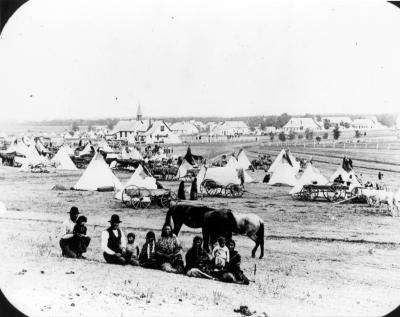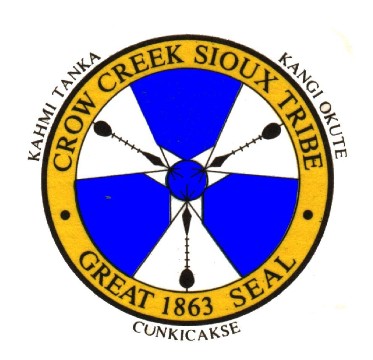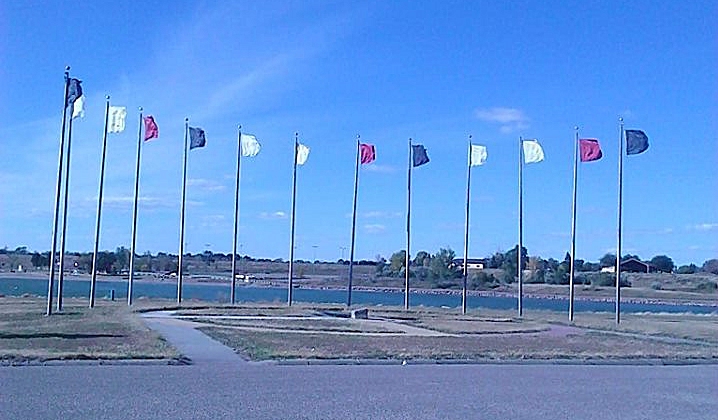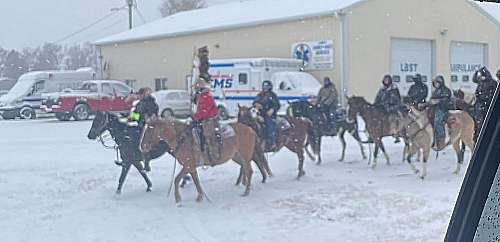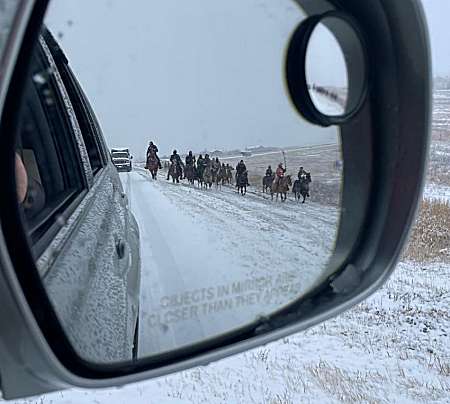Dakota
38 + 2 Memorial Ride 2021
Day 1 - December 10th
| Prayer for today Good morning
relatives, I said a prayer for you today May each stop be filled with warm furnishings, plentiful supplies, healing interactions, and restful nights sleep. May the circle continue to grow, and the blessings to unfold; for today and everyday you show us all how to become free Love, honor,
and respect The Riders are up in their saddles and raring to go! The horses are chomping at the bit, excited that they can again run for the People, for the Ancestors, for those who were hung in 1862 and for YOU. After some Ceremonies they will start this year's Ride. The first place they will go to will be the landing site of the Dakota in 1863, the land that was unknown to them, the place is known as Crow Creek. It is a very windy area, next to the Missouri river where they landed. Sick, frightened, mourning, scared women, children and elders, who had been thrown off of their Homelands and kept in captivity for many months in Minnesota (Fort Snelling). This was the land that they now had to get used to living on. Many died from starvation, from the weather, from the army; who were there against their wishes, to police these Native People who were so subdued they were no danger to them. Those who were supposed to ensure that they were able to survive, didn't care for them, the food they were given was no better than slops. Mothers watched their children die from the elements and from starvation. It was a place of death. Three years later, many of those who managed to survive were taken to Santee in Nebraska where their conditions were so much better.. The Dakota
Survived Some Historic Facts about the Dakota's stay on Crow Creek. Acts of Congress in February and March 1863 abrogated, or revoked, all treaties between the U.S. government and the Santee Dakota. As a result, all but a few protected groups of Dakota were exiled from Minnesota. Minnesota’s Ho-Chunk Indians living in Blue Earth County near Mankato, eleven of whom were tried for participation in the war, were also expelled from the state. This expulsion ushered in an era of bare survival for the Dakota, as well as the disintegration of many families. In May of 1863 1,300 Dakota were loaded onto steamboats and sent to Crow Creek reservation. Crowded onto the boats and weakened by imprisonment, many died on the voyage. The new reservation was desolate and food was scarce. In the first six months at Crow Creek more than 200 Dakota people died, most of them children. John Williamson, the son of missionary Thomas Williamson, accompanied the Dakota to Crow Creek and was instrumental in their survival. During the winter of 1863, he convinced Colonel Thompson to allow some of the Dakota men to go on a buffalo hunt, which furnished them with enough meat to last through the winter. "It is not starving to death here yet, but it is starvation all the time." John P. Williamson, Crow Creek, Dakota Territory, January 6, 1864. See more at: http://usdakotawar.org/history/aftermath/exile From one
of the Riders:
|
|
These flags
show the Memorial to the People on the banks of the Missouri.
The flags are in the Four Colors. The sound of them makes you
realize just how bad the wind is there, they can sometimes be
deafening in their intensity. I have been there a number of
times over the years and every time the wind didn't let us down,
always there, always loud, the flags flapping as if they were
angry. On ground level there is a Circle, a Medicine Wheel,
where you can walk around and pray, leave offerings, sprinkle
tobacco as you walk, that is immedietly picked up by the wind
and taken to where it is supposed to be. The Ride will go 11 miles today
The Riders
leaving for today's stretch of road
Be safe Rider's We are praying for you |
|
|
The Riders
will be staying at the Fort Thompson Hotel tonight. Thanks to all who have helped in the area. |
From Allen Sheppard
I love you all and all of you continue to give strength in a good way.
Ignore the negative, Uphold the positive continue to refuse to even
comment on negativity, we are for healing forgiveness and unity of the
six colors, four directions and colors of man ,green the earth, and
blue ,that which is above all. Every human of every society and faith
holds a piece of the puzzle and one day we will all need to come together
to see the true and good picture. - kodapi .~mn renegade
Mitakuye Owasin
